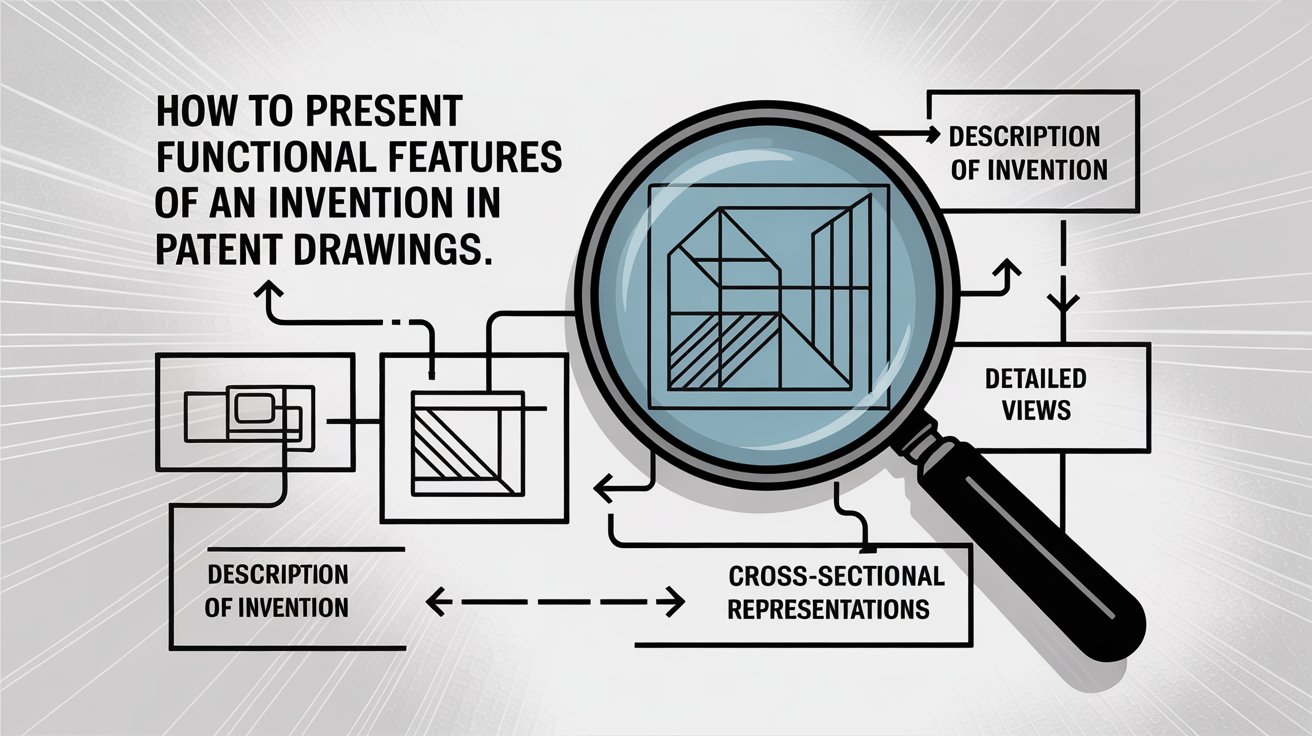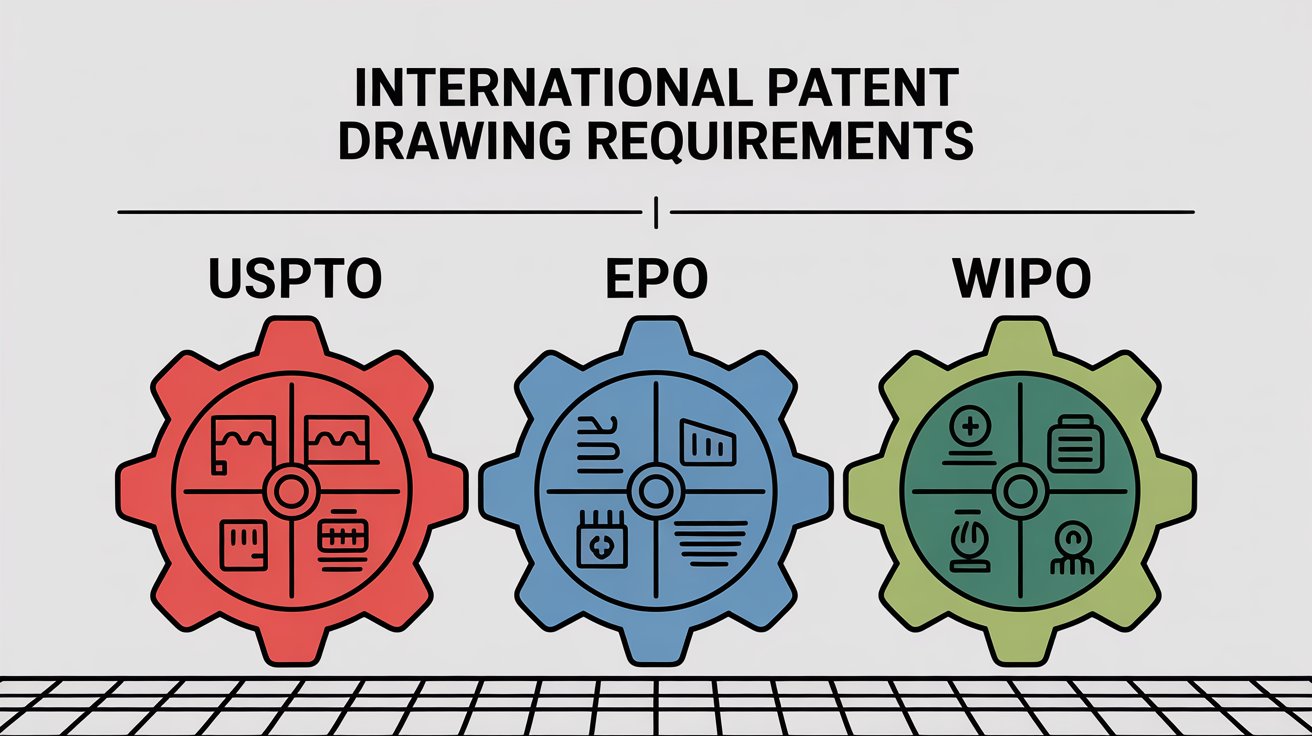When drafting a patent application, one of the most challenging tasks is to clearly present the functional features of an invention. While the claims define the legal boundaries of protection, drawings serve as a visual disclosure—helping examiners, courts, and competitors understand how the invention actually operates.
Unlike decorative sketches, functional patent drawings must comply with strict legal requirements laid down by authorities such as the USPTO, EPO, and WIPO. A failure to present functionality accurately can lead to:
- Rejections during examination.
- Misinterpretation of inventive features.
- Weaker enforceability in litigation.
In this article, we’ll explore technical methods, standards, and strategies to effectively illustrate functional features of an invention in patent drawings.
What Are Functional Features in Patent Drawings?
Functional features are the working aspects of an invention that explain how it performs rather than just what it looks like. These may include:
- Mechanical movement – e.g., the rotation of gears or motion of pistons.
- Flow processes – e.g., liquid, gas, or electrical flow through a system.
- Interrelationships – how different components interact or depend on one another.
- Operational states – normal, engaged, idle, or alternate functioning modes.
Unlike ornamental aspects emphasized in design patents, functional features are crucial in utility patents, where the strength of claims depends heavily on clarity of technical disclosure.
USPTO & International Requirements
The USPTO (MPEP § 608.02) and other international offices require that patent drawings:
- Must show every feature described in the claims.
- Should include multiple views where necessary.
- Use standardized symbols and conventions for arrows, broken lines, and sectioning.
- Be free from shading that obscures functionality (except permitted hatching).
USPTO Patent Drawing Rules outline detailed compliance requirements.
For PCT/WIPO applications, Rule 11 of the Patent Cooperation Treaty Regulations specifies uniform standards applicable across jurisdictions.
Techniques for Illustrating Functional Features
1. Use of Exploded Views
Exploded views are essential when an invention involves assemblies of parts. They clarify functional relationships by showing how individual elements fit together.
- Example: In a turbine engine, an exploded view demonstrates airflow from intake to exhaust through distinct components.
2. Cross-Sectional and Cutaway Views
Cross-sections are indispensable for internal mechanisms. They reveal hidden features like fluid channels, electrical connections, or layered structures.
- Use proper hatching to distinguish materials.
3. Arrows and Flow Indicators
Functional movement must be explicitly shown with arrows:
- Straight arrows for linear motion.
- Curved arrows for rotation.
- Dashed arrows for alternate or optional movement.
- Directional arrows for process flow (liquid, gas, or current).
4. Reference Numerals with Detailed Consistency
Each functional element should be assigned a unique numeral, referenced consistently in both the drawings and specification.
- Example: “Valve (102)” should be identified across all figures to avoid ambiguity.
5. Sequential Figures
For inventions with dynamic states, multiple figures showing different operational stages are mandatory.
Example: A folding mechanism for a smartphone hinge should show closed, partially open, and fully open positions.
Common Pitfalls in Showing Functional Features
- Ambiguity in arrows or symbols – Incorrect flow arrows can misrepresent the invention.
- Overcrowded figures – Combining too many features in one view leads to examiner confusion.
- Mismatched numerals – Inconsistency between text and figures undermines clarity.
- Ignoring office-specific rules – An illustration compliant with USPTO may not be accepted in EPO filings if it violates line thickness or shading conventions.
Case Study Example: Illustrating a Medical Device
Consider a syringe with a safety mechanism. Functional patent drawings would include:
- Exploded view of barrel, plunger, needle, and safety shield.
- Cross-sectional view showing plunger movement inside the barrel.
- Arrow indicators showing forward motion of plunger and retracting shield.
- Sequential figures to show “before injection” and “after injection” states.
Such technical precision not only strengthens patentability but also assists in future licensing or litigation.
Why Professional Expertise Matters
Preparing drawings that meet these technical standards requires both legal knowledge and engineering drafting expertise.
At Graphizon, our team delivers USPTO, EPO, and WIPO-compliant patent drawings tailored to highlight functional features effectively. From complex mechanical assemblies to biotech processes, we ensure that your invention is illustrated with:
- Precision engineering accuracy.
- Compliance with office-specific rules.
- Clarity in functional disclosure.
If you’re interested in exploring drawing tools, check out our detailed blog on Top Patent Drawing Software to understand how technology supports precision in patent illustration.
Presenting functional features in patent drawings is not just about neat illustrations—it’s about translating your invention’s operation into a legally enforceable disclosure. By employing techniques like exploded views, sectional drawings, directional arrows, and sequential figures—and ensuring compliance with USPTO and international standards—you significantly strengthen your patent application.
For inventors, startups, and IP attorneys seeking professional support, Graphizon provides expert patent drawing services that guarantee compliance, clarity, and functional accuracy.


